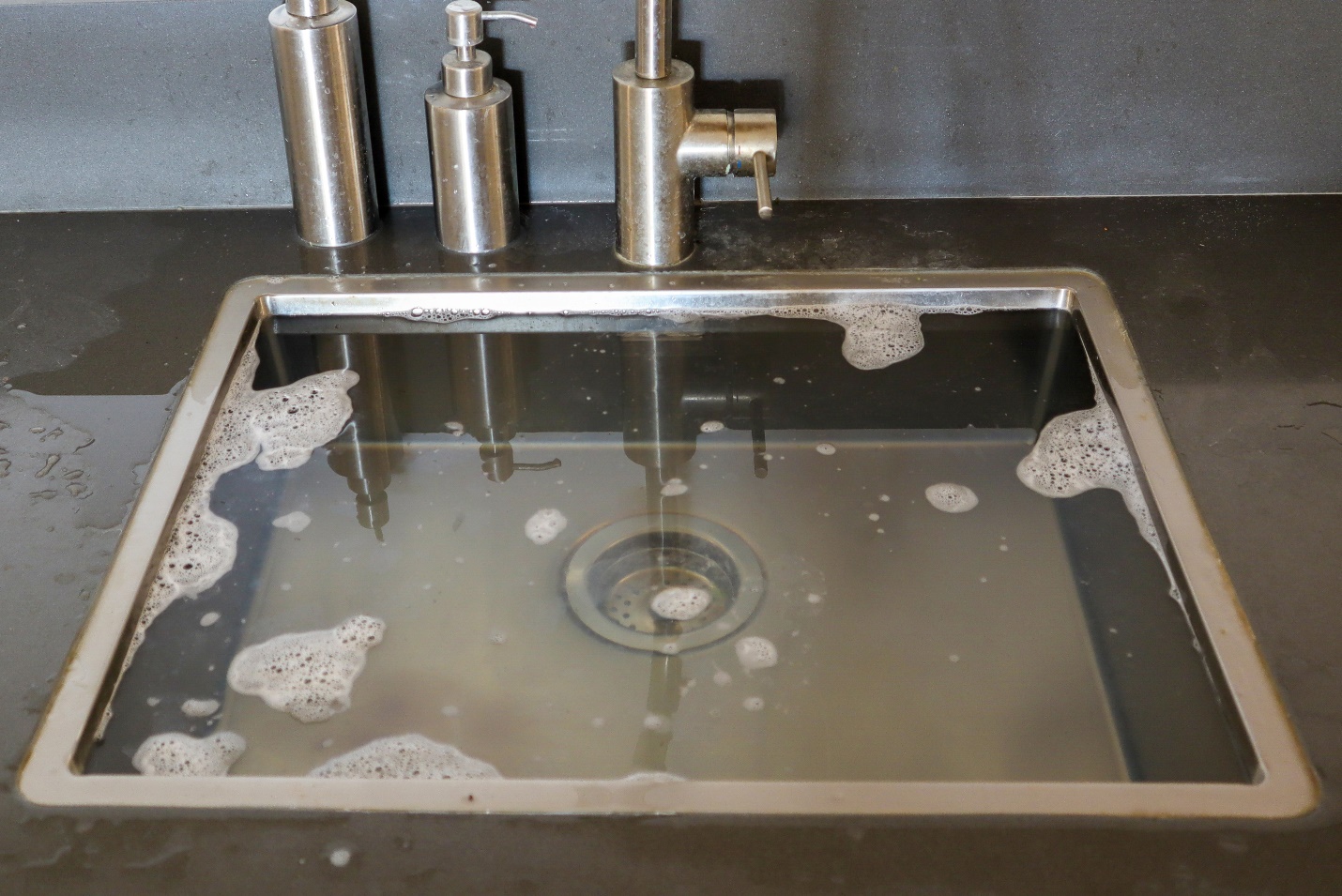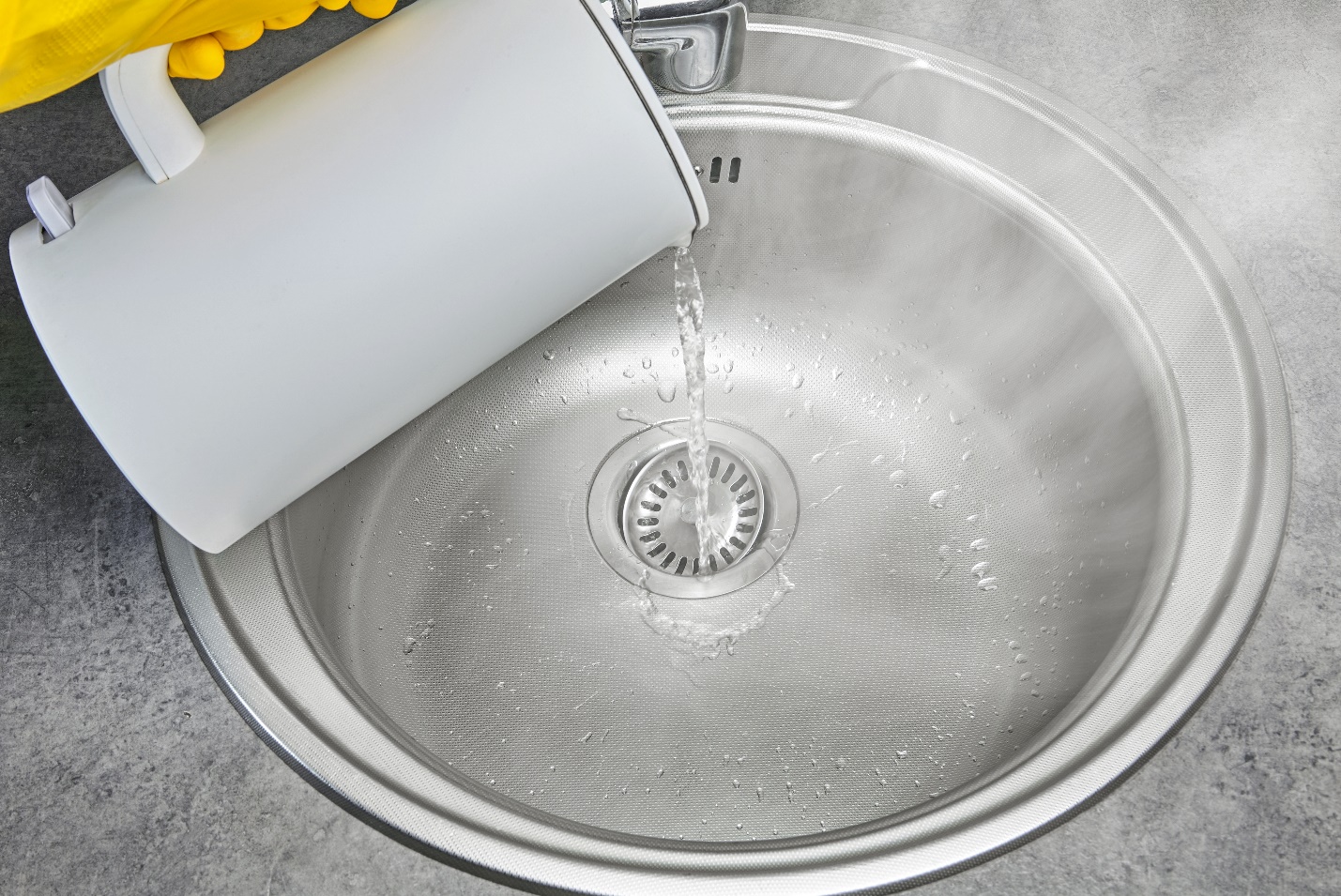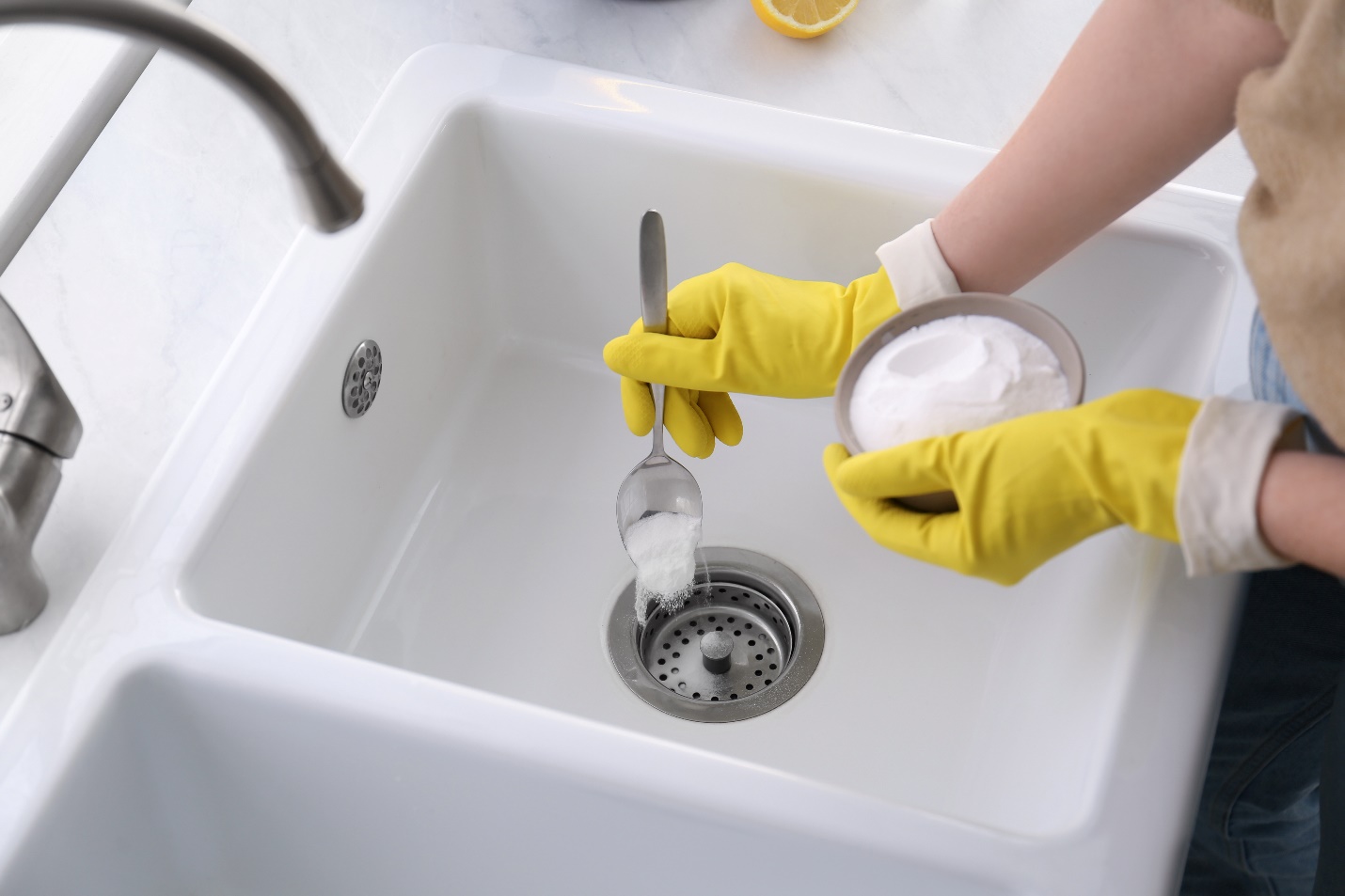Our home plumbing system is one of the vital systems we tend to take for granted until something goes wrong. Clogged drains are one of the most common plumbing issues you can have, as well as one of the most inconvenient. Worse yet, clogged drains can cause bigger problems, including major plumbing repairs and health concerns.
If you have a slow or clogged drain, don’t wait for it to get worse. It’s important to address clogs early to save yourself a lot of money and frustration in the future. Here’s everything you need to know about how to clear a clogged drain, 5 different ways to tackle that clog, and more tips from the experts at M&M Heating and Cooling.
Common Causes of Drain Clogs
Whether you have a clog in your kitchen sink, bathtub, or toilet, having a clogged drain is a big disruption in your home. Here are the common causes of household clogs:
- Fats, oils, and grease: Many people pour small amounts of cooking fats and grease down their kitchen drains every day. Over time, they coat the walls of pipes and combine with other debris.
- Food scraps: Food scraps shouldn’t go down the drain or into the garbage disposal. Coffee, eggshells, pasta, rice, and fibrous fruits and vegetables should be thrown in the trash instead of rinsed into the sink, no matter how small they are.
- Soap: Soap scum happens when fat mixes with the minerals in water. Excessive amounts of soap scum can build up in pipes, leading to a clog.
- Hair: Human and pet hair can form clogs by binding with grease and other sticky substances that wash down the drain.
- Mineral buildup: Mineral deposits can collect along pipe walls if your home has hard water, which contains calcium, magnesium, and other naturally occurring minerals.
- Trash: Small trash like paper towels, dental floss, feminine hygiene products, cat litter, and more are often flushed down the drain or toilet, but these products are not safe for your drains and can lead to clogs.
- Foreign objects: Children have a habit of tossing toys and other objects into the toilet or bathtub drain, which can get caught in a pipe’s curve and cause a clog.
Preparing to Unclog Your Drain
Before you get started with that clog, make sure you gather supplies and prepare the space for the DIY project. It will take about 30 minutes to tackle the clog. Make sure you have eye protection and gloves on hand if you’re using methods like boiling water.
You also need to ensure that the method you choose is safe for your plumbing. For example, if you have PVC drain pipes, don’t use boiling water as it can damage them.
Here’s what you need to complete all 5 drain-cleaning methods in this article:
- Baking soda
- Vinegar
- Drain cleaner (optional)
- Plunger
- Rubber gloves
- Rubber drain plug
- Auger or drain snake
- Safety goggles
- Wet/dry vac (optional)
- Plunger
Plunger
Plunging a drain uses pressure to remove the clog and may be the best choice to try first. Plunging doesn’t involve chemicals or dangerous methods like boiling water, so it’s one of the safest options for your DIY plumbing fix.
If you’re working on a kitchen sink drain, you may also need a conical rubber plug, which is available in the plumbing section of your local home improvement store.
Here are the steps to unclog your drain:
1. Depending on the type of drain you’re working on, you’ll need to seal all the exits to the drain first. With a kitchen sink, seal off the dishwasher drain to prevent pushing water into the dishwasher by unplugging the garbage disposal and disconnecting the dishwasher drain hose from it. Then, use a rubber plug to close the drain hole.
2. Remove the sink stopper and fill the sink with a few inches of water so you can create a strong seal and force the clog to move.
3. Place a plunger over the drain. You will need to create a tight seal around the drain with the plunger to produce the necessary suction.
4. Pump the plunger up and down several times. As you move the plunger, the suction it creates inside the drain can move the clog through the pipe, breaking it apart and allowing it to flow.
5. Run the water for a minute or two after the drain clears. Remove the plunger and see if the water drains. If it doesn’t, try plunging again until the drain clears.
Boiling Water
If plunging doesn’t work, you can try removing a clog with boiling water. Make sure you only try this method if you have metal pipes. If you have PVC pipes, skip this method, as these pipes can only tolerate temperatures up to 140 degrees Fahrenheit.
Here are the steps to use boiling water for a clog:
1. Bring a half gallon of water to a rolling boil.
2. The boiling water must make direct contact with the clog to work its magic. You will need to take out the sink stopper and remove any standing water in the sink by bailing it out or using a wet/dry shop vac.
3. Pour boiling water directly down the drain.
4. If the sink doesn’t drain after you’ve poured down the boiling water, repeat the above steps.
Baking Soda and Vinegar
Baking soda and vinegar is an ideal solution for many clogs. It’s also easier on your plumbing than harsh commercial drain cleaners. When you mix baking soda and vinegar together, it causes a strong bubbling that can help break apart clogs.
Here are the steps to use baking soda and vinegar on a clog:
1. Start by taking out the sink stopper and removing any standing water from the drain with a wet/dry vac. The baking soda has to come in contact with the vinegar at the site of the clog, so it’s crucial to remove standing water.
2. Pour one cup of baking soda down the drain.
3. Pour one cup of white vinegar down the drain.
4. Place a stopper over the drain opening. This step is critical, as the stopper will direct the reaction created by the vinegar and baking soda toward the clog.
5. Let the mixture sit for 15 minutes.
6. Remove the drain stopper and run hot water to clear the clog.
Auger
If you have a stubborn clog or a clog caused by a foreign object, a drain snake or auger may be your best option. These devices use a meta cable that runs through a drain to clear the clog. You can find drain snakes and augers at most hardware stores.
Here are the steps to use an auger on your drain clog:
1. Remove any stoppers from the drain to clear the way for the auger.
2. Feed the auger’s cable into the drain by hand.
3. Turn the auger handle while applying pressure to feed the cable further into the drain. If you hit resistance, you’ve found the clog.
4. Continue rotating the snake using a crank or a cordless drill until you feel the clog clear.
5. Remove the auger from the drain.
6. Run hot water to make sure the drain is cleared.
Commercial Drain Cleaner
Commercial drain cleaners are not ideal for your pipes, but many homeowners rely on them for stubborn clogs. These cleaners have harsh chemicals that are toxic and bad for the environment, not to mention the toll they can take on your pipes. This should only be a last resort, but if you’re tempted to use a drain cleaner, you may want to hire a plumber for drain cleaning instead.
Follow the manufacturer’s directions for drain cleaners. Generally, the steps include:
1. Remove any standing water using a wet/dry vac. The cleaner needs to come in direct contact with the clog.
2. Remove the sink stopper to make way for the drain cleaner.
3. Pour in the drain cleaner according to the manufacturer’s instructions.
4. Allow 15 to 20 minutes for the clog to dissolve.
5. Run warm water through the drain to rinse out the cleaner.
How to Prevent Drain Clogs
Preventing drain clogs is much easier than clearing them. Here are some tips to prevent drain clogs in your kitchen and bathroom.
- Don’t pour grease or oil down the drain. These substances will harden and cling to the inside of your pipes as they cool, capturing other debris and leading to a stubborn clog.
- Don’t let solids go down the drain. Use a sink strainer to catch food particles in the kitchen sink drain.
- Avoid putting hard foods in your garbage disposal. Bones, coffee grounds, and fibrous vegetables, to name a few, should be thrown out instead of put into your garbage disposal.
- Try to catch hair before it goes down the drain. Hair is a common source of clogs in bathroom and shower drains. Install a hair catcher and clean it regularly to avoid excess hair finding its way into your drain.
- Use baking soda and vinegar regularly. This is a gentle method that can not only clear clogs but keep your drains flowing freely by removing regular buildup.
Clear Those Stubborn Clogs
If you’re experiencing stubborn clogs that you can’t fix on your own, M&M Heating and Cooling is here to help. Contact us today to schedule your appointment!






















